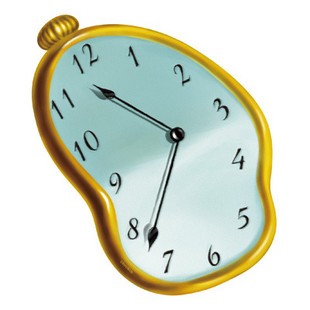 Time is imprinted in our genes. Daily circadian rhythms (circa, about; diem, a day) control the harmonious oscillation in all biological systems.
Time is imprinted in our genes. Daily circadian rhythms (circa, about; diem, a day) control the harmonious oscillation in all biological systems. “At the gene level, circadian rhythm is the most conserved cluster of genes in biology. Fruit flies and humans have about the same genetic code for circadian rhythm. This machinery is the linkage between biological processes and the environment ,” stated Professor Ali Keshavarzian, Director, of the Division of Digestive Diseases at Rush University Medical Center.
The Earth rotates on its axis with a cycle of 24 hours and all biological systems including humans are exposed to periods of light and dark. We spend on average 20 years of our life sleeping. But sleep pattern is only one example of circadian controlled behavior. “Probably more than 20% of our genes are circadian controlled.
Most cells in our body contain the molecular machinery necessary to generate circadian rhythm,” added Prof. Keshavarzian.
In their excellent book Rhythms of Life, authors Russell Foster and Leon Kreizman write: “[we] kid ourselves that we can beat a few billion years of evolution. We cannot. We and just about every living thing on the planet – animals, plants, algae, bacteria – have a biological clock that was first set ticking more than three billion years ago.”
When Circadian Rhythm is disrupted
Our modern life style and work pattern may have a negative effect on our biological state of equilibrium. About 20% of people in the industrial world are shift workers and many of us often air travel across several time zones. When day-night cycles are chronically disrupted, there is higher tendency to gain weight and develop metabolic complications such as inflammation bowel disease (IBD).
But there are more common daily events that may cause circadian disorganization, explains Prof. Keshavarzian. In addition to jet lag, we may be exposed on a weekly basis to “social jet lag” with similar negative implications. This “social jet lag” is triggered by differences in sleep time and wake up time; an individual who has a sleeping pattern during the week of 10PM to 6AM and then alters that on the weekend to midnight until 10 AM.
This creates a three- hour difference in the “sweet point” of the two sleeping periods.
In other words, you may be “traveling” east every week without leaving your house. The result is a similar disruption to your biological clock.
It's not only what you eat--it's when.

Last year, scientists in the US and Israel carried out clinical studies in mice and humans and proposed an explanation to the health implications caused by disruption of day-night cycles. They showed that gut microbiome had a marked impact by perturbations in circadian light-dark cycles. They have found that the microbiome both in mice and humans have its own quotidian cycles that are influenced by feeding rhythm.
The composition of the microbiota changes with daily eating pattern. When mice were exposed to repeated changes in their light-dark cycles, they showed dysbiosis – imbalanced composition of their microbiota; their gut barrier function was compromised. This was exacerbated when mice were fed with a high fat and high sugar diet.
These changes are known to result in inflammation and are linked to higher incidence of chronic diseases including obesity, cancer and cardiovascular diseases.
Scientists at the Salk Institute studied the effect of time on eating and health effects. They demonstrated clearly that conditions of time-restricted eating prevented mice from becoming obese. Even reversal of obesity was observed. On the other hand, mice that were allowed to eat at all hours were generally obese. Based on their research the scientists believe we should also contain our meals to twelve hours a day or less.One of the experiments that demonstrate most clearly the link between circadian disruption and the microbiome was carried out by Eran Elinav, MD at The Weizmann Institute in Israel. His team studied two travelers on a fight from the US to Israel. They analyzed the travelers’ micrrobiota before the flight, during the jet lag period and after recovery from the jet lag.
As expected from the animal model experiments, the flight through eight time zones caused changes in the composition of the travellers’ microbiota to a composition that is known to promote glucose intolerance and obesity. The mcrobiome composition of the two travelers reverted back to normal after two weeks.
These clinical studies demonstrate that health and wellbeing are highly dependent on our diet, the composition of what we eat. But another key factor is the time of eating. Our meals should be rhythmic with our daily day-night cycles.Time is imprinted in our genes; it is etched into us and tailored for life on planet Earth. Does it mean we, Homo sapiens cannot colonize Mars? Are we going to be able to adjust our biological clocks to Martian day? A day on Mars is 24 hours and 37 minutes.
A study done at Brigham and Women’s Hospital in Boston showed that volunteers could be synchronized to the 24.65 – hour-day of Mars.
References
Ali Keshavarzian et.al, Circadian Disorganization Alters Intestinal Microbiota, PLoS One 9 (5) e97500 (2014) Eran Elinav et.al. , Transkingdom Control of Microbiota Diunal Oscillations Promotes Metabolic Homeostasis, Cell 159, 514-529 (2014) Satchidananda Panda, Time-Restricted Feeding Is Preventative and Therapeutic Intervention against Diverse Nutritional Challenges, Cell Metabolism, 20, 991-1005 (2014)Images credit: drawception.com, www.infmetry.com





Comments